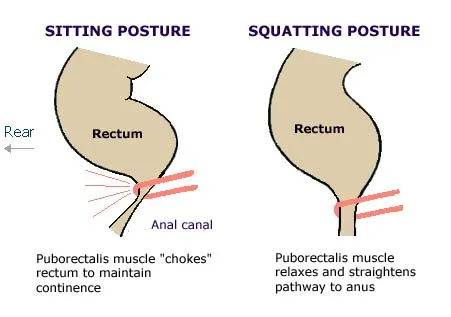Introduction : What is Rectocele?
Rectocele happens when the supportive tissues between the vagina and rectum weakens and that causes the front of the rectum to bulge into the back wall of the vagina. The other articles in this series were Vaginal prolapse, Cystocele and Uterine Prolapse .
Rectocele is not the same as Rectal prolapse.In rectal prolapse, the rectum bulges through the rectum and not through the vaginal wall.
Women are more likely to have a rectocele than men. A small % of men can develop Recocele following the removal of prostate, as a treatment for prostate cancer.Rectocele is usually seen in older women, after multiple vaginal births.
When it’s a small rectocele people do not have symptoms and it does not need any treatment. Certain lifestyle modifications can help maintain and slow down the progression of the rectocele.See the table of do’s and don’ts to manage pelvic organ prolapse at the end of this article. Rectoceles need treatment only when they start to interfere with the quality of life, and lifestyle.
Definition: It is the bulging of the rectum into the posterior (back wall ) of the vagina.

Causes :
- Traumatic Vaginal Delivery : The tears/ episiotomy ( surgical incision ) that can occur can reach to the rectum.
- Weak pelvic floor muscles and weakening of the tissues b/w the rectum and the vagina.
- History of constipation involving chronic straining.
- Rectal surgeries
- Pelvic surgeries (Hysterectomy)
Diagnosis:

Rectocele can be detected in a physical pelvic exam by a gynecologist, colorectal surgeon , or urogynecologist .Further tests may also be done to assess the severity more accurately.
Tests :
Defecography :Special X-ray that shows the changes in rectum and anal canal during defecation. This test can be very specific about the degree of prolapse and the extent of bowel emptying.
Treatment :

Treatment can be both surgical and non surgical treatment depending on the severity of the Rectocele.
- Non Surgical Treatments :Mild cases can be treated without any surgical methods with remedies like bowel retraining.
- Surgical Treatments : Surgical options considered when non surgical treatments do not resolve the symptoms and continue to interfere with the quality of life.Surgery aims to strengthen the wall between the vagina and the rectum to fix the rectocele. Posterior Colporrhaphy is the surgical way to fix rectocele.
Physical Therapy :

Pelvic floor exercises are an effective way to strengthen the Pelvic floor muscles and to help maintain and prevent further worsening of rectocele.
When a pelvic organ prolapse is noted depending on the degree of prolapse it can be managed at home with the below listed Do’s and Don’t .For effectiveness regular, consistent practice is required .

Conclusion
- Rectocele is when rectum budges thought the posterior wall of the vagina.
- This can be treated successfully non surgically in mild case of prolapse.
- Pelvic Physical Therapy can be an effective way to manage mild degrees of prolapse.
- Any question or comments are welcome .


